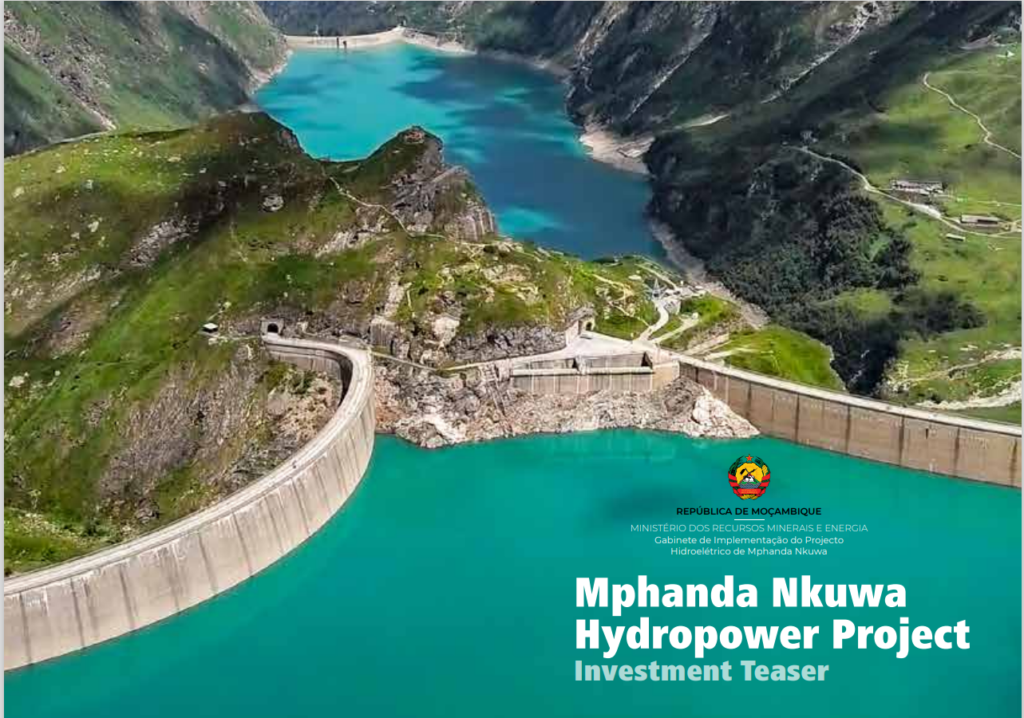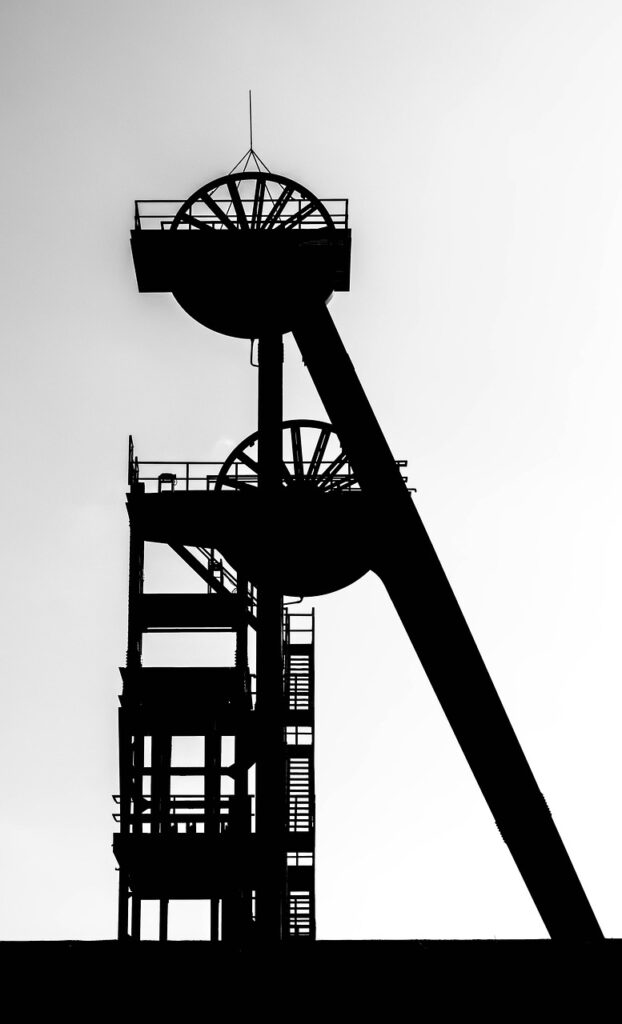Projects
in motion
HYDRO DEVELOPENTS
Making the most
of Hydroelectric
dam capacities
The Kariba Dam was built in 1958 to supply Zambia and Zimbabwe with electricity. Two power stations were built into the banks of the river below the dam for 500 megawatts each. This was the projected capacity of the river flow through the Dam from the Zambezi River. It was and still remains the largest man-made lake in the world.
More recently the two countries expanded the generation capacity of the dam to over 1000 megawatts on each side of the river. The motivation being to maximise the use of available water after the dam had spilled 5 times since it was completed. This might allow both countries to maximise output, but it uses more water than the average inflow and in the past 3 years the power stations have had to be closed down or restricted in output because there has been insufficient water.
When a power station of this magnitude is built, it requires very substantial infrastructure to generate the power and then send it hundreds of kilometers to demand centers. When a shortage of water reduces output, this underutilizes this expensive infrastructure.
Keep following this page for further update on these developments.
The Intensive Energy Users Group in Zimbabwe recognised this and the new availability of technical capacity to generate power using the sun. It has proposed the development of a solar panel power station for 1 000 megawatts of electrical energy, to be floated on the lake and to augment the power generated by the water driven turbines at the Dam wall. This proposal has been accepted by the Zambezi River Authority (ZRA) and the Zimbabwe Government and the power utility that runs the turbines at the wall – the Zimbabwe Power Corporation (ZPC).
The project is being divided into 4 stages of 250 megawatts each and the study to determine viability and to establish all the technical information we need to build and operate the power plant, will start in January 2025 at a cost of US$4,5 million. The study will be conducted by a international team of consultants drawn from China, Germany, Britain, South Africa and Zimbabwe and is expected to take 5 months.
Once completed, this study will be employed to secure the funding required to cover the cost of the project. This will involve 420 000 solar panels, on a floating platform in a sheltered bay some 15 kilometers from the main power plant. This will feed energy via a complex control system to a major battery complex where the electrical energy will be stored prior to delivery to the ZPC power plant where it will be blended with hydro power and fed into the national grid via transmission lines to the north and south.
When the floating solar plant is generating power from the sun, it will allow the hydroelectric plant to reduce generation and conserve water. This will allow the main plant to use more of its installed capacity at peak demand times and to make better use of the transmission infrastructure of the region.
When all stages are complete, the solar platform will increase the overall capacity of the hydroelectric plant by a third and reduce water use to a level that is more manageable. The batteries used will help stabilize and manage the power generated and allow the ZPC to control the flow of energy generated to the grid. It will do so at a cost that is well below the cost of conventional power stations. This incremental power will be sold to IEUG Members as base load power for mining and industrial production.
The project is being backed by Afrexim Bank of Cairo who are putting up US$3 million for the bankable study with IEUG putting up the additional US$1,5 million. Supported by the Bank, the IEUG and its partners attended the African Investment Forum in Rabat, Morocco in early December 2024 where its estimated cost was oversubscribed.
Regional and African Implications.
In the SADC region as a whole, hydroelectric projects play a massive role in meeting regional needs. Tanzania, Angola, Malawi, Zambia and Mozambique all have very substantial investments in hydro electric plants. The Congo river represents some of the largest potential in the world for cheap, clean power.
All of these projects could use this new technology and when the study of the Zimbabwe project is complete, we will offer its findings to other countries in the region.
Mphanda Nkuwa Dam and power station
The lower Zambezi in Mozambique has the combined flows of several major rivers in the region. For this reason, the hydrology supporting power production is much better than in the river flowing through Zimbabwe and Zambia. Four projects are planned on this section of the river to take advantage of the power potential, the first is the Mphanda Nkuwa dam, 62km below the Cahora Bassa dam. This project is budgeted to cost $4.5 billion including transmission to regional states and the first phase to produce 1500 MW of power, which could be increased to 2400 MW.
To enlarge image – hold down ‘ctrl’ and scroll upwards using mouse/keypad.






SOLAR DEVELOPMENTS
Floating Solar
Zimbabwe has over 10 000 dams on its river systems. This includes the largest man made lake in the world at Kariba Dam. In those countries where new solar power generation plants are being developed on water, it has been demonstrated that we can increase the energy output of a hydroelectric plant by up to 35 per cent by augmenting output with solar generated energy.
In addition to this direct result, it has been observed that in hotter parts of the world, solar panels on water perform up to 20 per cent better than on land because average temperatures on water are lower and more temperate.
To add to these advantages, hydroelectric plants can be operated as peaking plants and this reduces the duration and impact of load shedding.
With this in mind, the Intensive Energy Users Group, through its power generating arm plans to build water borne solar energy plants at selected sites in Zimbabwe. The objective is to hybridise solar generation with hydroelectricity generation.
Keep following this page for further update on these developments.
The Intensive Energy Solar Power Plant Development Program
It is clear that the only way Zimbabwe can cover its shortfall in electrical power in the short term is by using solar power generation. Solar power panels have declined in cost to about 14 cents per watt or about US$70 each and at the same time they have become much more efficient and productive.
The problem remains that they only generate power for about 6 hours on an average sunshine day and are unstable. These problems can only be addressed by sourcing balancing power from some source or using battery storage. While this technology is constantly improving, it is still the costliest part of any solar installation.
In the household sector, a quiet revolution is underway with tens of thousands of small solar installations on roofs linked to small Lithium batteries to hold electrical energy when the panels are not operating. Such installations have reduced in cost very dramatically but still cost about US$5000. This development is now spreading to industry and mining with balancing power being provided from other sources.
IEUG is working with ZESA Holdings Limited on a national program to generate as much solar energy as we can balance using our baseload plants using fossil fuels and hydro electricity plants. We have more applications than we can accept but are developing a list of projects that can meet our requirements. Applications to be considered for this program should be addressed to the IEUG at its address in the Website.
Those projects we accept will be supported with a Power Purchase Agreement for the life of project in US dollars at a negotiated tariff. It may also be possible to underwrite the loans required to bring the proposed plant into operation.
Recent technological developments in the electrical energy industry has profound implications for the industry worldwide. The leading change has been driven by both market forces and technology in the solar panel sector. Solar panels have increased in their capacity and reduced in price at such a rate that today a megawatt of installed capacity can be created for a fraction of the alternatives, including hydro, natural gas and nuclear.
Reinforcing this, the great weakness in this technology – the unreliability of solar and its dependence on weather conditions, is rapidly being addressed by new battery technology. Led by lithium batteries which have allowed the development of low cost systems to meet small scale demand, to new technologies that are threatening to overtake lithium with units that have a longer life, are much more efficient and storing power more economically.
The consequence of these changes are being felt across the world as clients choose to go “off grid” and increasing volumes of low cost energy become available in established markets. China has stated that they think their grid may be reaching saturation point. Other markets are trying to interpret what the arrival of virtually free electricity means for them.
For the owners of traditional power plants, this is a nightmare as they watch their domestic demand for power shrink so that they cannot expect to charge an economic tariff for power and get clients to take the power as happened in the past. Competitive market forces have suddenly increased sharply in intensity. In the IEUG we are struggling with how to manage new investment and the associated Power Purchasing Agreements that must be associated with them. In this environment a 20 year PPA at a fixed tariff looks like a remote possibility. Self-managed mini-grids may be one answer.
Zimbabwe mining industry prospects

Zimbabwe is reported to have the highest ration of resources to population in the world. How the boffins come to this conclusion is not difficult to see if you are a student of Geology. Zimbabwe has an abundance of natural resources which can be mined and sold internationally. The main ones are gold, the platinum group of minerals and metals, coal, lithium, nickel, iron ore and chrome. In some cases, the proportion of global resources available and found in this country is in excess of 20 per cent.
In the past 5 years the growth in the mining sector has been phenomenal with mining-based export earnings increasing fivefold. This is now putting great pressure on the country’s infrastructure of rail and road capacity as well as electrical energy. The Intensive Energy User Group was formed by the industry in response to this challenge and the request by the National Utility for help in meeting the growing demand.
Demand for power has risen by 30 per cent in the past year and we are projecting national demand to reach 10 000 megawatts by 2030, four times current demand. The IEUG buys power from regional power plants and supplies this to Member Companies without interruption. In the Mining industry this is critical to maintain safe and productive conditions underground and to process the products brought to the surface.
